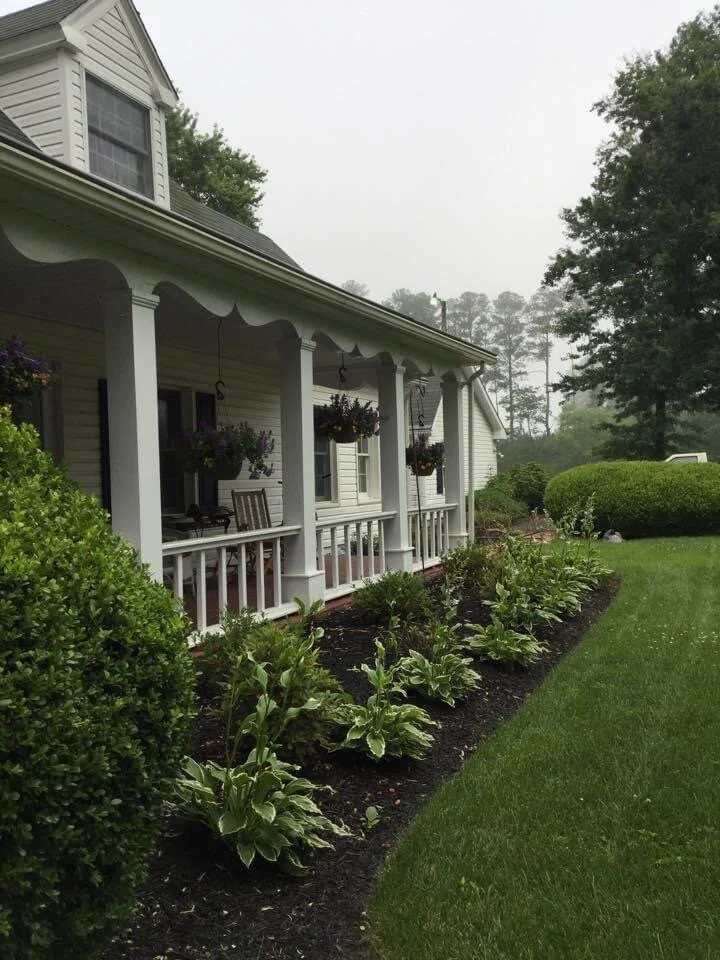Memory Garden
Fall arrived while I was thinking of other things. I look at my flower beds and am reminded of all I meant to do last spring and summer and did not get done. It is time to make another list of tasks related to winterizing the garden and plan for next spring. I know I will do about one-quarter of what I plan.
For about six weeks, the flower beds looked great this summer. I took pictures — they are around somewhere. But now weeds flourish. Adolescent trees (gangly and wild) grow among the Peonies, Cana Lilies, Elephant Ear plants, Stella Dora, Ornamental Garlic, Phlox, and the ubiquitous only-for-summer annuals. Shriveled tomatoes and heavy, yellow cucumbers rest on the ground. Even the deer, woodchucks, and other scavengers ignore them now.
Dad said, “Ask Eric to have the guys take those out,” as he pointed to the weeds, volunteer plants, and uninvited trees (adolescents, skinny and untamed) that clutter his view.
“No, no. I’ll do it. It relaxes me,” I answered, knowing that I wouldn’t get around to it. I had the best of intentions.
Dad does what he does, so one morning, he calls to me from the breezeway, “Nancie, come talk to Eric.”
“About what?” I ask though I know exactly what.
Eric, patient and primed for this annual ritual, points out all that needs to be done—albeit gently—and after the obvious things—the young volunteer mimosa tree out of place in the right pool bed, a tree or is that a bush of some sort in the left bed—he queries, “Want us to cut back the Hosta this year?”
“No!” I state firmly, as I do every year. “Don’t touch the Hosta. I’ll handle the Hosta.”
I transplanted those Hosta—the descendants of plants, which years before my husband dug up from the land around a deserted summer camp near our own in the Adirondacks and transported to our home in Virginia, he planted them in our yard. While they thrived there, our marriage did not.
When we sold the house, I dug up as many of them as I could under the pretense of cleaning up the garden for the new owners. I was trying to salvage something—anything—to make our new house and life more comfortable. Familiar. And, I think now that I did not want anything to go to waste.
One weekend in the spring following the first year of our new life, my daughters and I drove to my parents’ home on the Eastern Shore of Maryland. There I planted the children of the plants I had moved from my former life to the new one—the descendants of those Adirondack Hosta. I had no way of knowing then that I would move again into that house about seven years later and permanently tend to those beds.
Again, the Hosta thrived. Better than they had in the Adirondacks. Better than they had in Northern Virginia.
Years after my mother died, after I moved in with Dad, I returned from the grocery store to find that someone had ripped out the Hosta and covered where they had been with mulch. I dug through the mulch to see if the bulbs were still there so the plants would reappear the following spring, but they were gone. I cried.
Though I spoke in terms of how much they would cost to replace, I really mourned the memory of digging the holes, placing the plants, and watering them while I spoke to Mom as she sipped coffee and watched me. I remembered her telling me how much she enjoyed them.
"Tell them not to touch my Hosta,” I said to Dad each fall after that.
He always agreed but asked, “Why don’t you tell them. They’ll listen.”
The following summer, voles ate the Hosta I had planted in the back beds. I saved about eight little shoots, transplanted them to a big pot, and hoped for the best. They survived, and I planted them out front. Those did well, and I split them, then replanted them in the backyard beds.
Now, every year, Eric asks me if I want his crew to cut them back. Every year, I say, ‘No!”
“Okay. We don’t touch the Hosta,” he says.
This year, too, Eric suggests that we cut the Hosta back to the ground.
“They’ll come back,” he says reassuringly. “If you don’t cut them back, they’ll just die and lay there looking ugly.”
I look at him.
“No,” I say. But when he and the team arrive the following week to do all that needs doing, he suggests we walk through it all again.
Should we dig out that Montauk Daisy that has grown into a bush and blooms each fall beautifully? Its blossoms lay like a wreath around a woody crown of nothing at the center. It is so old. What about the Rhododendron in the garage bed?
I tell him we can cut them back the way we did last year and see how they do. “They remind Dad of my Mom,” I tell him. And that is how we make decisions—mom matters.
Then we come to the Hosta again.
“And you don’t want me to cut those back, right?”
I stare at the Hosta. I remember my mother with her coffee mug, in her bathrobe, smiling and talking to me as I dug around, arranged everything just so.
“Cut them back,” I say. “They’ll come back next year.” Like the memories, Dad and I have when we see my mother in our garden plants each spring and summer.






